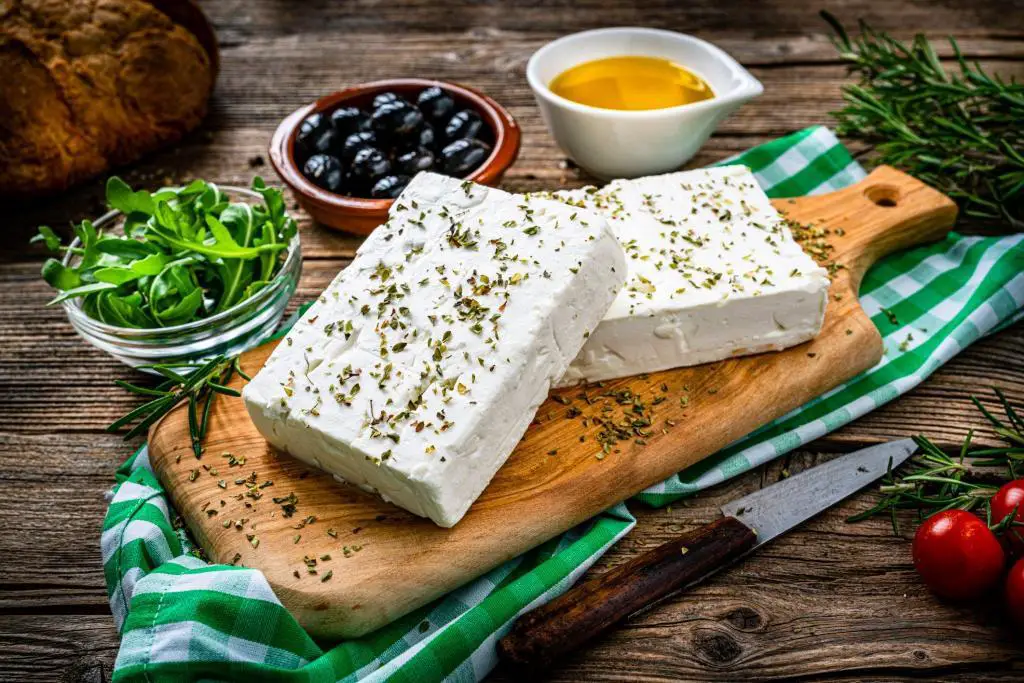Where Does Feta Cheese Come From?

Feta cheese, with its tangy flavor and crumbly texture, has become a beloved staple in Mediterranean cuisine. But have you ever wondered about the intriguing journey this iconic cheese takes from farm to table?
The history of feta cheese is as complicated and interesting as the flavors it gives. It starts with myths from ancient Greece and ends with artisanal production methods used today.
Come with us on a culinary adventure as we try to figure out where this versatile cheese ingredient really comes from. Find out about the unique soil that gives it its flavor, the careful skill that goes into making it, and how this simple cheese has won hearts all over the world.
So grab a glass of wine and a basket of bread, because we are going on a tasty journey through the history of feta cheese. This trip will not only satisfy your taste buds, but it will also help you understand the cultural significance of the cheese better.
Where Does Feta Cheese Come From?
Feta cheese has a rich history and is known for its distinctive taste and texture. Here’s a closer look at where feta cheese comes from and its characteristics.
Feta cheese originated in Greece and is an integral part of Greek cuisine. It has been made for centuries, with traditional methods and recipes passed down through generations. Traditionally, feta cheese is made from sheep’s milk. However, it can also be made from goat’s milk, cow’s milk, or a combination of these milks. The type of milk used can affect the flavor and texture of the cheese.
Feta cheese is known for its salty and tangy flavor. The level of saltiness can vary depending on the producer and the aging process. The tanginess comes from the lactic acid produced during the fermentation process. Feta cheese can range in texture from firm and crumbly to soft and creamy. The texture is influenced by factors such as the type of milk used, the processing methods, and the length of aging.
| Read: What Cheese To Use for Poutine? |
What Are Some Creative Ways to Use Feta Cheese?

1. As a dip
Because feta and goat cheese are both soft, they whip up easily into a dip. For a cheese-forward dip, combine either with fresh herbs, garlic, or other seasonings. Crumble the feta or goat cheese into another dairy base, such as sour cream or Greek yogurt, for a chunky dip.
2. On a meat and cheese board
Including cheeses with varying tastes and textures on a charcuterie board or other cheese board is appealing. Try a block of feta or a log of herbed goat cheese in addition to cheddar, Brie, and burrata.
3. Crostini
It is a popular appetizer that consists of a toasted baguette or other bread base and various toppings. Olives and feta cheese, as well as goat cheese and jam, are popular pairings.
4. Salads
Feta and goat cheese are popular in Mediterranean, Greek, and Italian cuisines, particularly in salads. Goat cheese complements dried fruits, nuts, and seeds, as well as a light olive oil vinaigrette. Meanwhile, feta cheese is a popular ingredient in traditional Greek salads.
| Also see: Can You Eat the Rind of Manchego Cheese? |
How Do You Know if Feta Cheese Is Bad?
First and foremost, if there is mold or any dark spots on the surface, discard them.
Check the color and consistency of the cheese to see if it has been submerged in the brine. If the cheese has darkened and become slimy, discard it. The same applies if it has developed a sour, cream-like odor.
Check the texture of the cheese to see if everything up to this point appears to be in order. If it crumbles when you pick some, it’s probably past its prime and should be discarded.
Can You Eat Feta Cheese After It Has Passed Its Expiration Date?
In the refrigerator, feta cheese is prone to drying out. It should not be consumed if it becomes dry, hard, or gritty. While it is still safe to eat, the texture and taste will be quite unpleasant.
Is It Possible to Get Sick from Spoiled Feta Cheese?
Consuming feta that has passed its expiration date can have serious consequences. You put yourself at risk of listeria food poisoning if you consume enough. When you consume foods contaminated with bacteria, this type of food poisoning is to be expected.
How Long Will Feta Cheese Keep?
This cheese, which is traditionally made from sheep and goat milk, should have a sell-by or use-by date. As you are probably aware, the cheese should retain its quality for some time after the expiration date. Let’s look at the shelf life of various varieties.
When it comes to unopened blocks of feta, the shelf life is usually between two and three months. And, because the saline solution in which the cheese is stored does an excellent job of preserving it, the feta should easily last for 2 weeks to a month after the expiration date on the label.
On the other hand, we have crumbled feta that is not sold in brine and thus does not keep its quality as long. Nonetheless, you can anticipate.
| Also see: Why Does Cheese Mold in the Refrigerator? |
Can I Substitute Mozzarella for the Feta?
When compared to feta, this white, soft cheese has a sweeter and more mild flavor. So, if you want a less tangy cheese, mozzarella cheese might be the way to go. This cheese also has a lower sodium content and a higher moisture content. Use mozzarella in place of feta on pizzas, with vegetables, and in sandwiches!
Is It Possible to Freeze Feta Cheese?
Yes, it is possible to freeze feta cheese, but it may alter the texture and flavor of the cheese. Freezing feta cheese can cause it to become crumbly and slightly grainy upon thawing, which may not be ideal for all dishes. However, if you plan to use the feta cheese in cooked dishes or crumbled over salads, the texture change may not be noticeable.
To freeze feta cheese, wrap it tightly in plastic wrap or aluminum foil, ensuring it is well-sealed to prevent freezer burn. Alternatively, you can place the feta cheese in an airtight container before freezing. Frozen feta cheese can be stored in the freezer for up to three months.
When you’re ready to use the frozen feta cheese, thaw it in the refrigerator overnight. Avoid thawing feta cheese at room temperature, as this can cause the cheese to become too soft and lose its texture. Once thawed, use the feta cheese as desired in your recipes.






